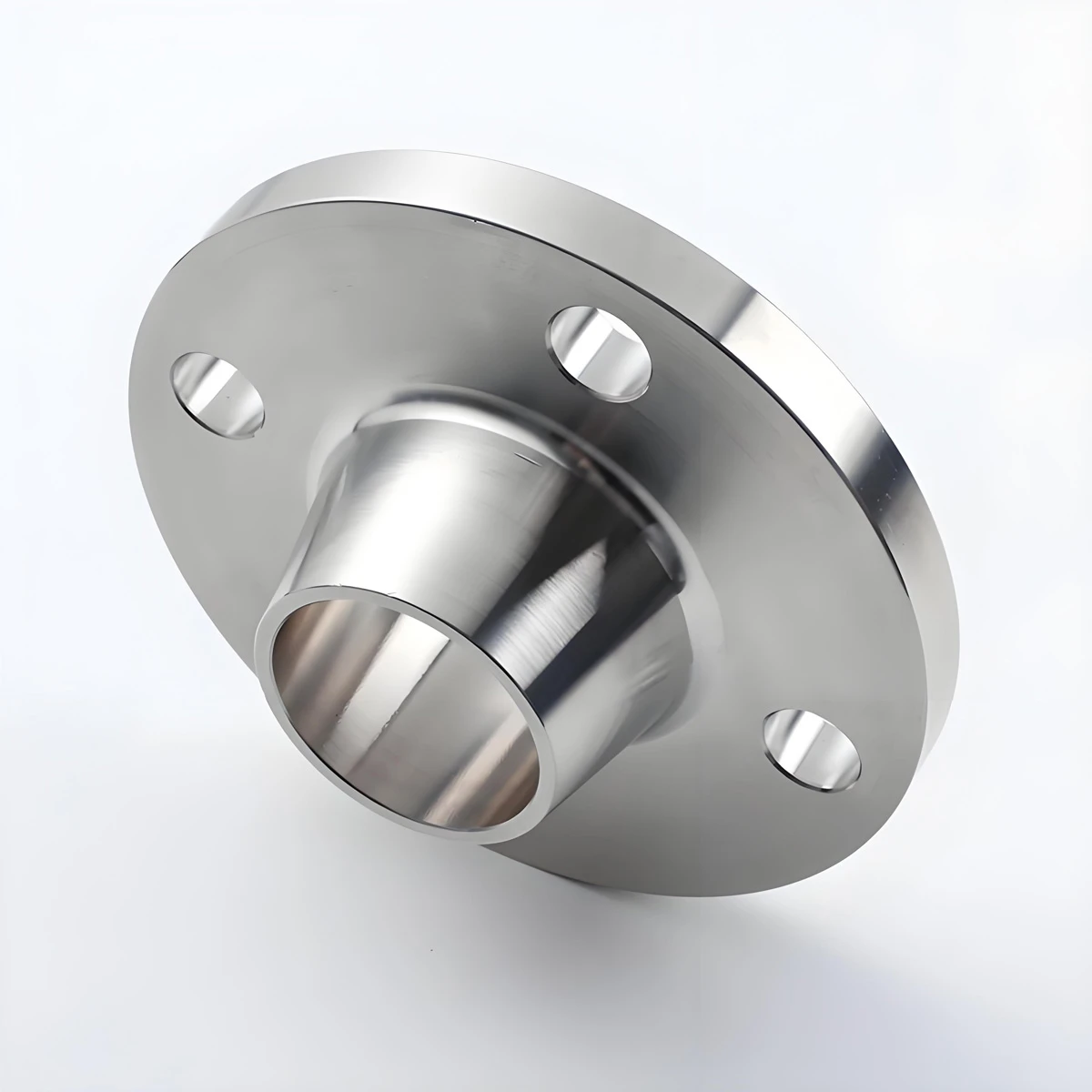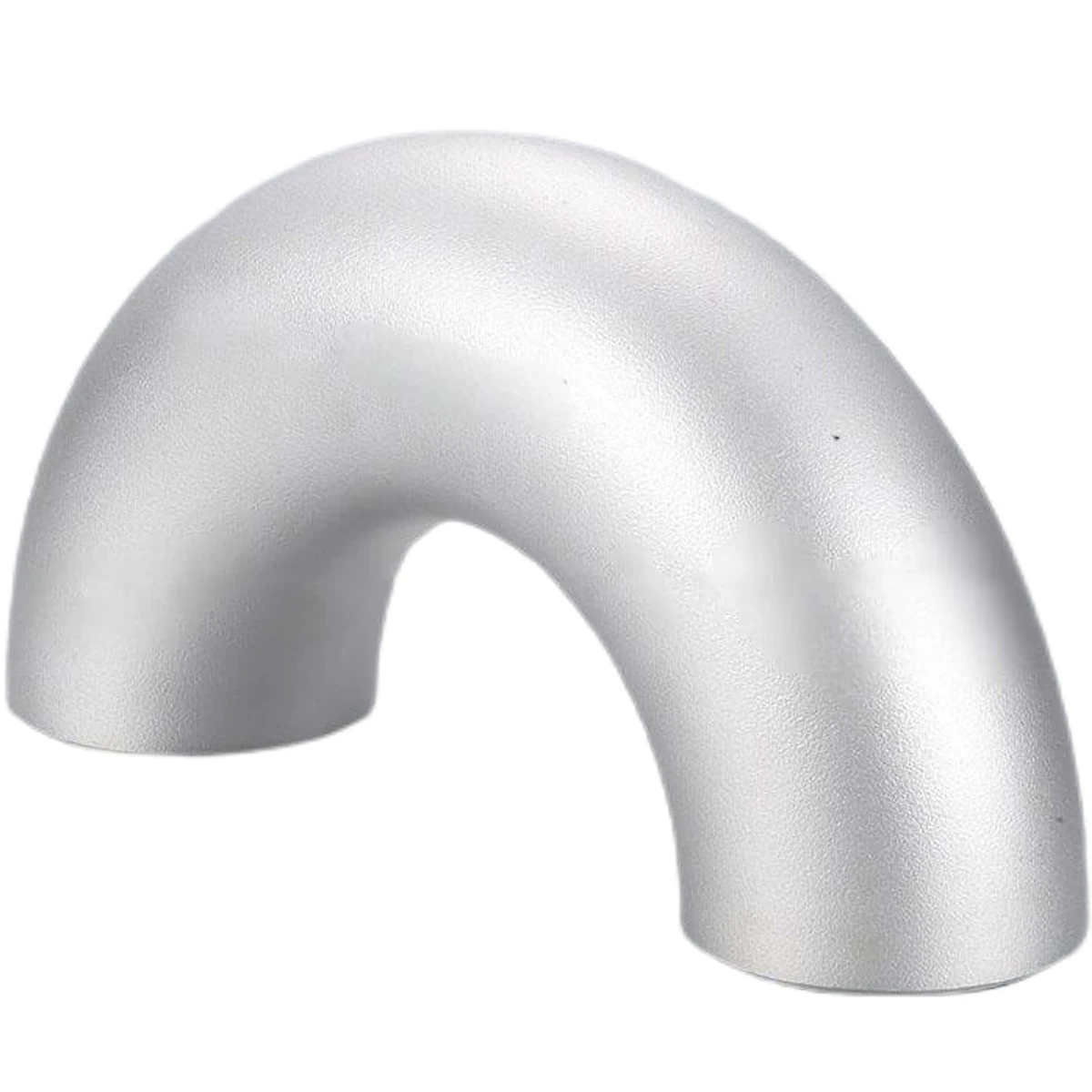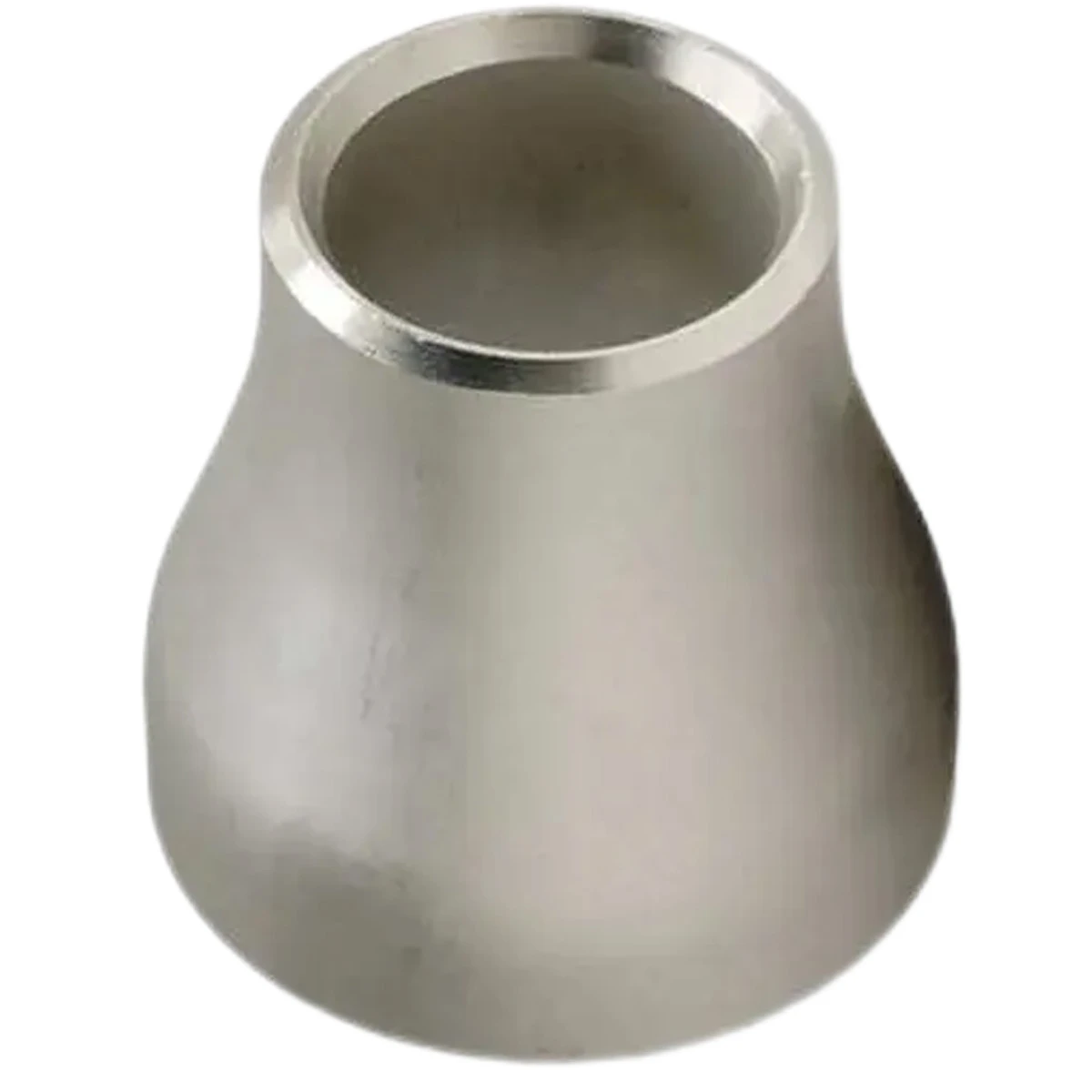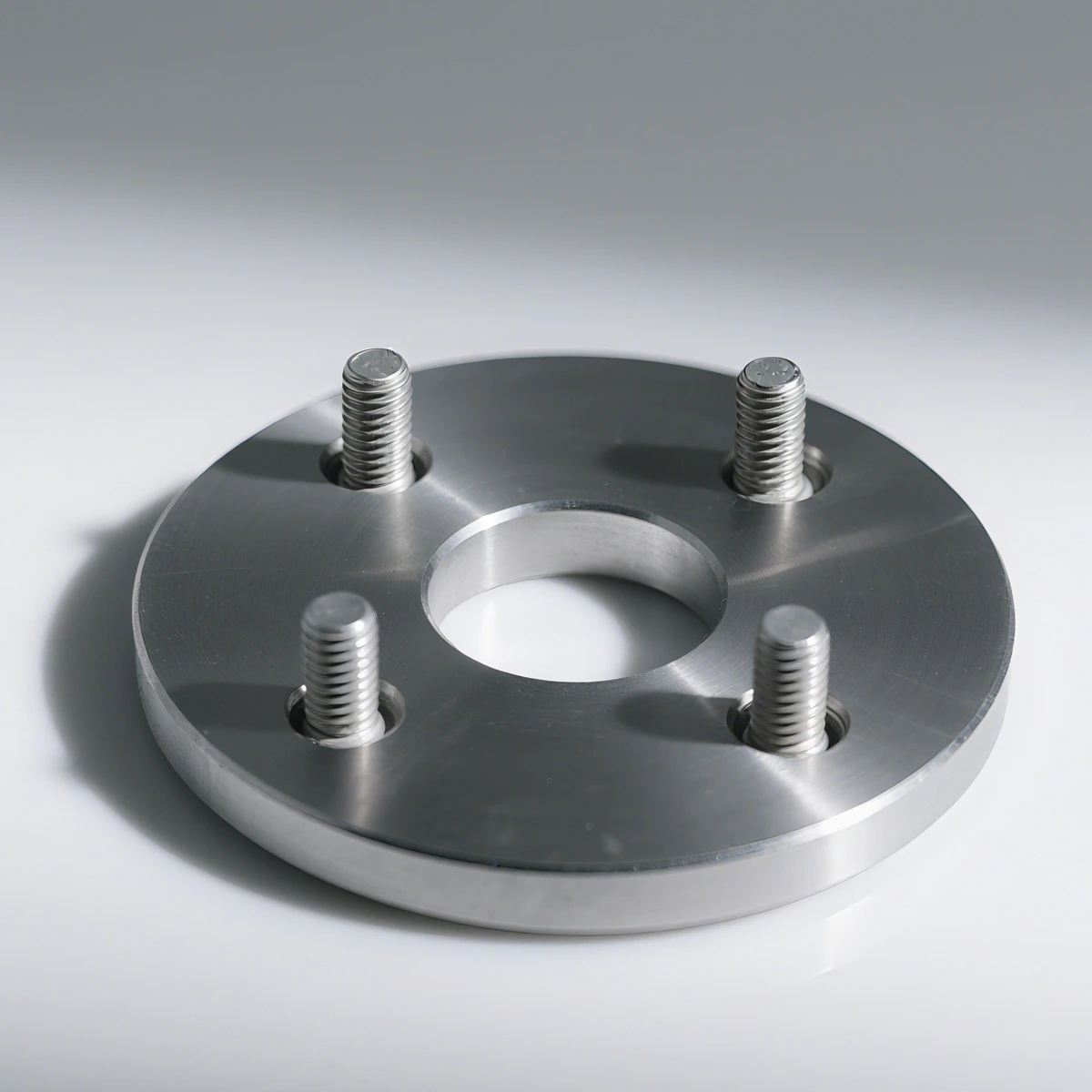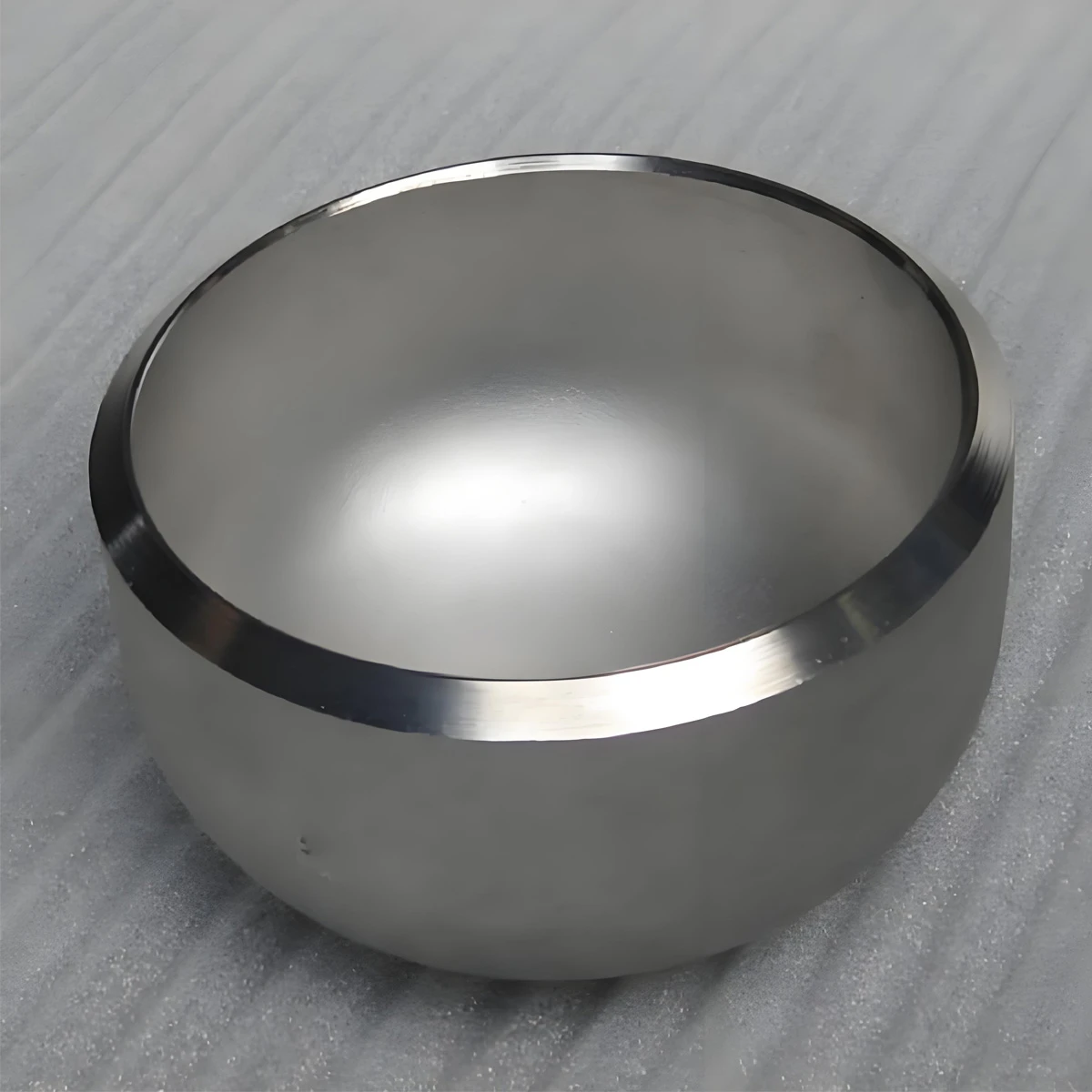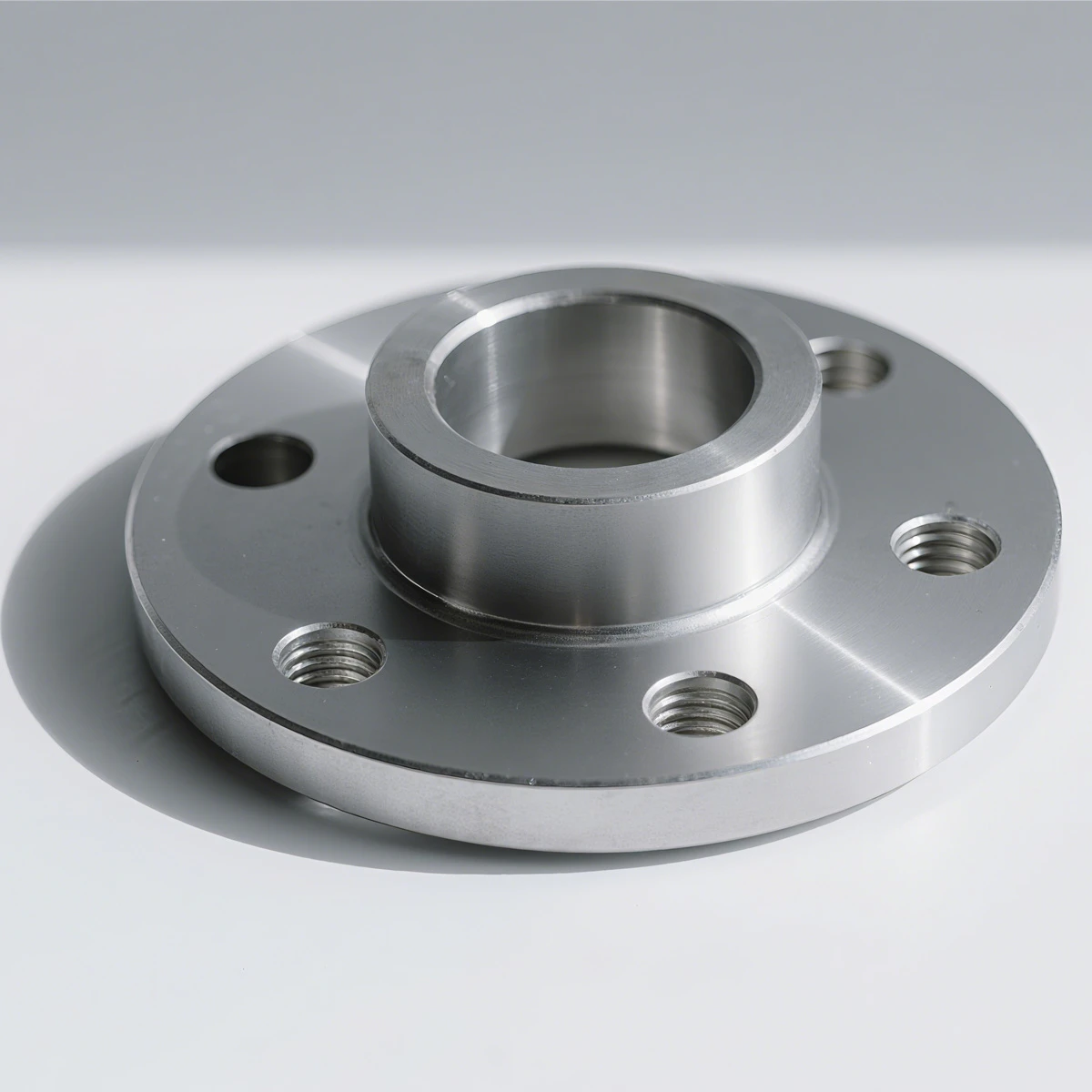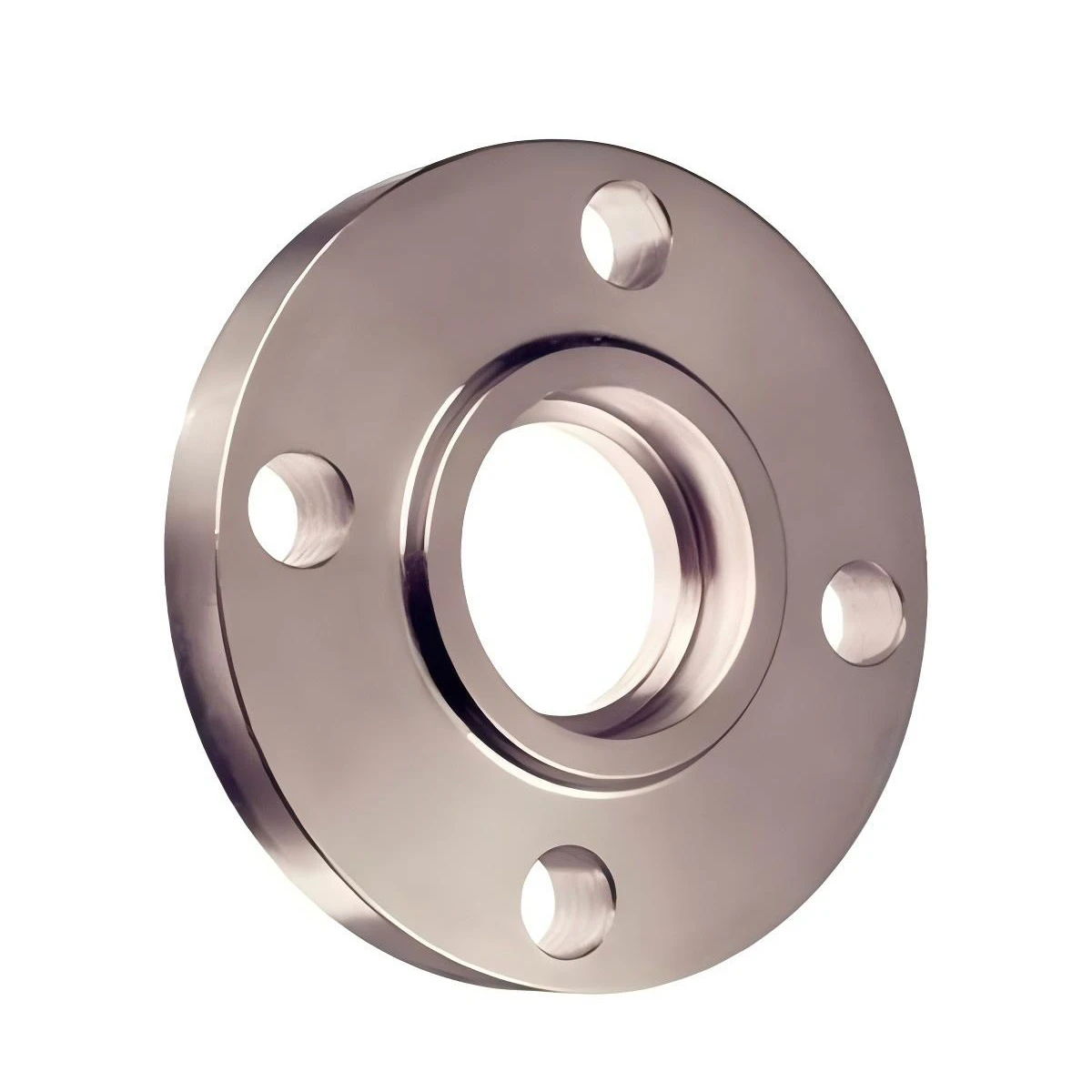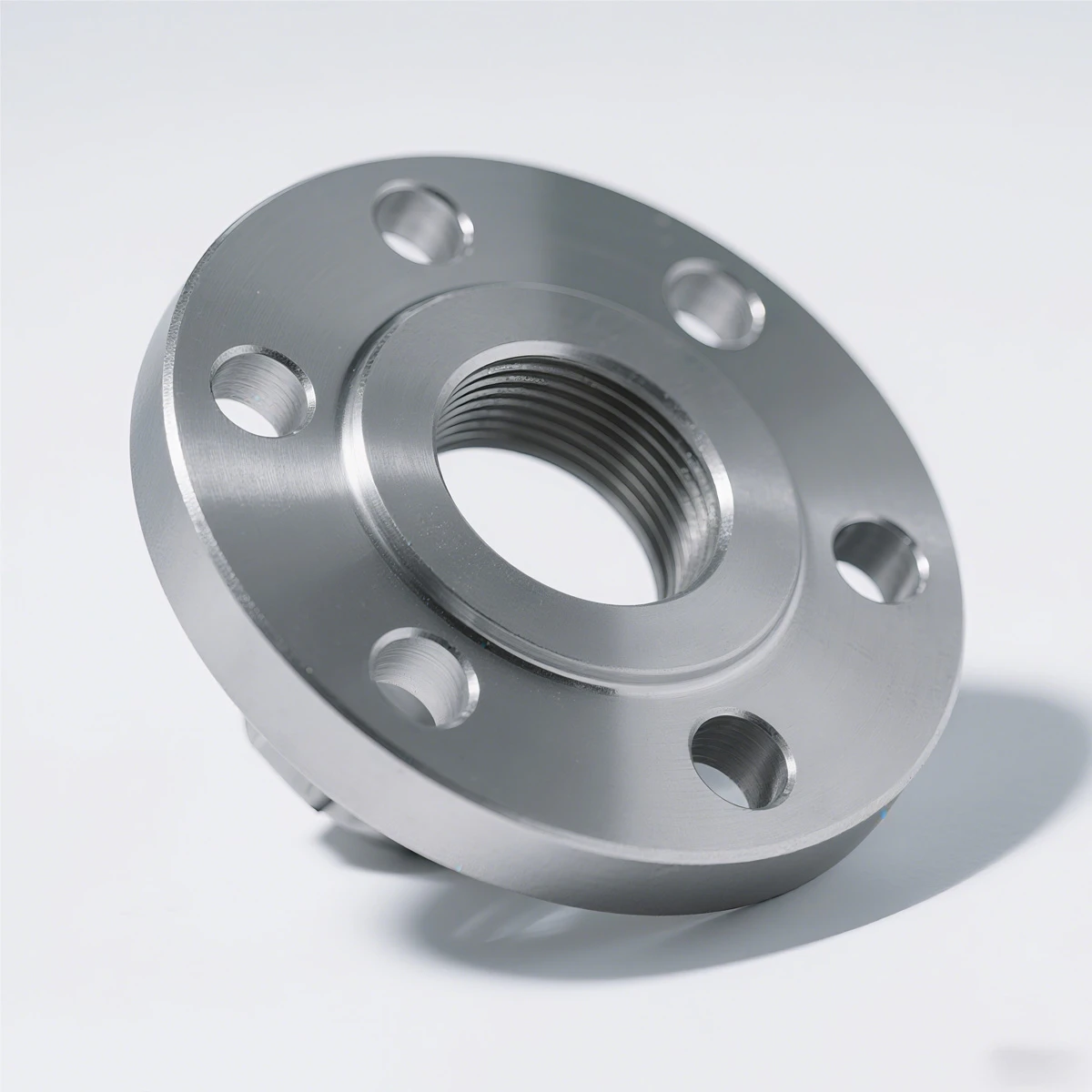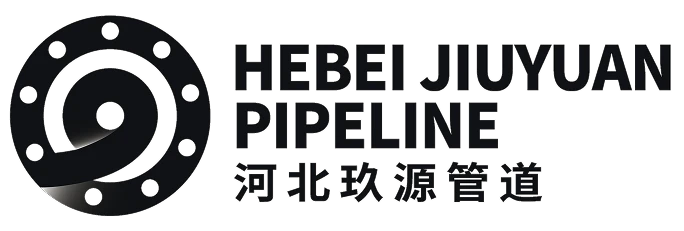
- Albanian
- Arabic
- Armenian
- Azerbaijani
- Belarusian
- Bengali
- Bulgarian
- Croatian
- Czech
- Danish
- Dutch
- English
- Esperanto
- Finnish
- French
- German
- Greek
- Hebrew
- Hungarian
- Indonesian
- irish
- Italian
- Japanese
- Khmer
- Korean
- Kyrgyz
- Lao
- Latin
- Lithuanian
- Malay
- Myanmar
- Norwegian
- Persian
- Polish
- Portuguese
- Romanian
- Russian
- Serbian
- Slovak
- Slovenian
- Spanish
- Swedish
- Tagalog
- Thai
- Turkish
- Turkmen
- Uzbek
- Vietnamese
- Zulu
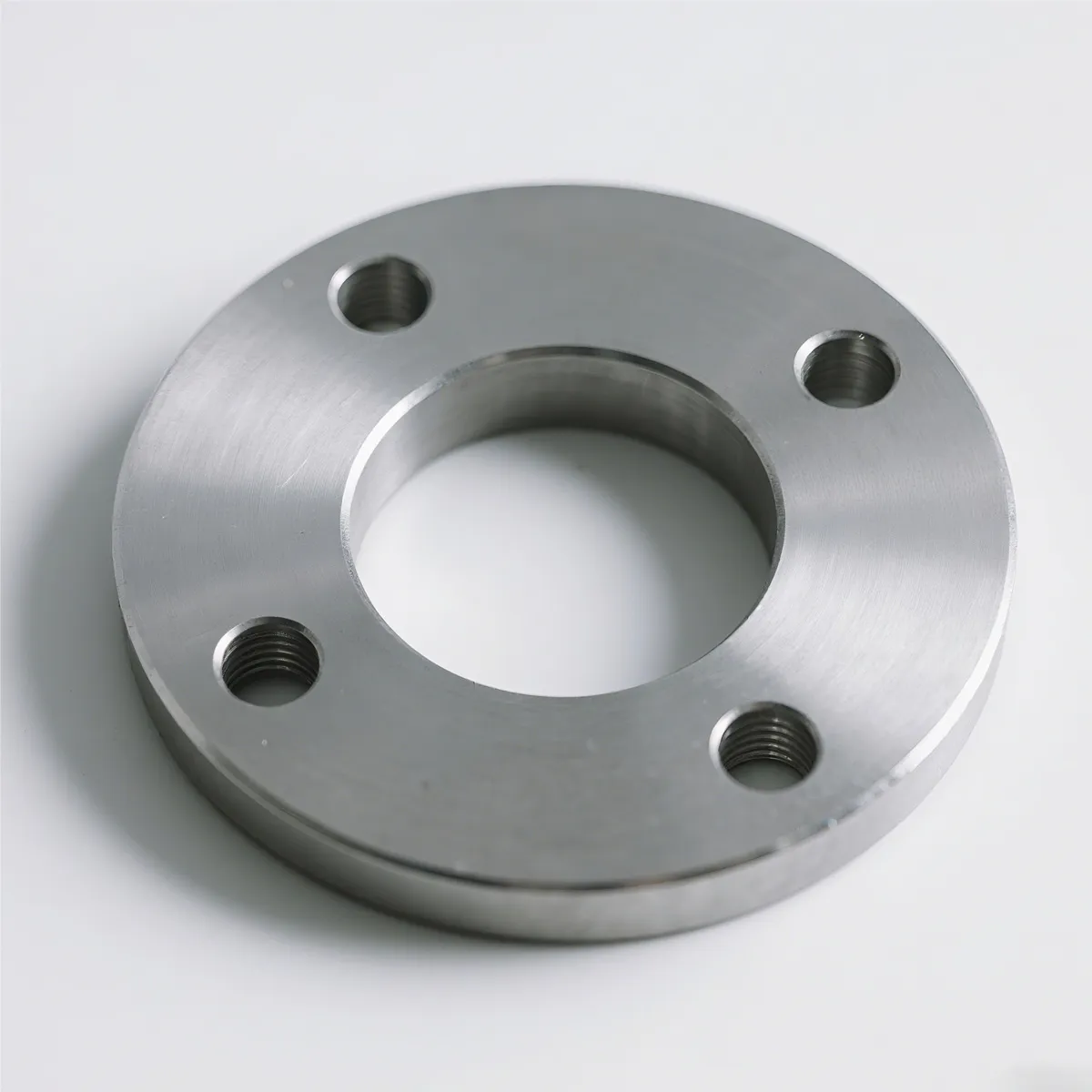
In the vast and complex world of industrial piping, the integrity and efficiency of connections are paramount. Among the myriad of flange types, the lapped flange stands out for its unique design and unparalleled advantages in specific applications. This comprehensive guide delves deep into the realm of lapped flange technology, exploring its critical role across diverse industries, from the petrochemical giants to vital municipal water systems. We will navigate through its technical intricacies, understand its manufacturing excellence, compare it against alternatives like the lap joint flange and flange lap joint stub end, and highlight why it is often the preferred choice for demanding environments.
Our aim is to provide an exhaustive resource for engineers, procurement specialists, and industry professionals, showcasing not just what a lapped flange is, but also its strategic benefits, precise technical parameters, and the meticulous process that goes into its creation. Through real-world data, expert insights, and a focus on Google standards (Expertise, Experience, Authoritativeness, Trustworthiness), we intend to build a bridge of understanding between the product and its potential applications, ensuring you make informed decisions for your critical infrastructure projects.
1. Navigating the Industrial Landscape: Trends and the Rise of Lapped Flange Technology
The global industrial sector is continuously evolving, driven by demands for increased efficiency, enhanced safety, and greater environmental sustainability. Within this dynamic environment, piping systems form the backbone of operations, transporting everything from crude oil and natural gas to potable water and corrosive chemicals. The choice of flange plays a pivotal role in ensuring system integrity and longevity. Over recent decades, the lapped flange has gained significant traction, especially in scenarios where ease of installation, material cost efficiency, and flexibility are critical.
Historically, traditional welding flanges dominated the market. However, as industries sought more adaptable and cost-effective solutions for specific challenges—particularly involving exotic materials or frequent maintenance access—the lap joint flange emerged as a superior alternative. This trend is evident in the petrochemical and chemical processing industries, where the handling of highly corrosive media necessitates expensive, high-alloy materials. Using a flange lap joint stub end with a less costly carbon steel backing flange significantly reduces the overall material cost without compromising the wetted part's corrosion resistance.
Current industry trends indicate a growing emphasis on modular construction and pre-fabrication, where the inherent flexibility of the lapped flange in allowing for easy bolt hole alignment becomes a major advantage, saving significant installation time and labor costs on site. Furthermore, the push towards asset integrity management and extended plant lifecycles means that components like the lapped flange that offer robust performance and simplified maintenance are increasingly preferred. According to a report by Grand View Research, the global industrial flanges market size was valued at USD 5.7 billion in 2022 and is expected to grow at a compound annual growth rate (CAGR) of 4.5% from 2023 to 2030, with specialized flanges like the lapped flange contributing to this growth due to their specific benefits in niche applications.
2. Technical Deep Dive: Understanding Lapped Flange Parameters and Standards
A lapped flange, often referred to as a Lap Joint flange, is a two-piece assembly consisting of a stub end and a loose backing flange. The stub end, which is typically butt-welded to the pipe, has a flared or "lapped" section that faces the mating flange. The backing flange, usually made of a less expensive material like carbon steel, slips freely over the pipe and the stub end, allowing for easy rotation to align bolt holes. This design facilitates faster and more efficient assembly, especially in tight spaces or when working with large diameter piping.
Key Components and Their Function:
- Stub End (Flange Lap Joint Stub End): This is the critical component that comes into direct contact with the process fluid. It is butt-welded to the pipe and typically manufactured from the same corrosion-resistant or high-temperature alloy as the pipe itself. The flared end (lap) forms the sealing face against the gasket.
- Backing Flange (Lap Joint Flange): This is the loose ring that slips over the stub end. It provides the mechanical strength to bolt the connection together but does not come into contact with the process fluid. It is usually made from carbon steel, making the overall assembly more economical.
Materials of Construction:
Lapped flanges are fabricated from a wide array of materials to suit diverse operating conditions, including pressure, temperature, and corrosive media. Common materials include:
- Carbon Steel: ASTM A105, A350 LF2 (for low temperature), A694 F52/F60 (for high yield strength). Used for general purpose applications where corrosion is not a major concern.
- Stainless Steel: ASTM A182 F304/304L, F316/316L, F321, F347. Excellent for corrosion resistance in various chemical and food processing applications.
- Alloy Steel: ASTM A182 F5, F9, F11, F22, F91. Used in high-temperature and high-pressure services, such as power generation and refining.
- Nickel Alloys: Hastelloy, Inconel, Monel. Chosen for extreme corrosive environments.
Dimensional Specifications and Pressure Ratings:
The dimensions and pressure ratings of lapped flanges adhere to strict industry standards to ensure interchangeability and safety. The most common standards are:
- ASME B16.5: Covers pipe flanges and flanged fittings from NPS 1/2 to NPS 24, for pressure classes 150, 300, 400, 600, 900, 1500, and 2500.
- ASME B16.47: Covers large diameter steel flanges from NPS 26 through NPS 60, in pressure classes 75, 150, 300, 400, 600, and 900.
- API 6A: For wellhead and Christmas tree equipment in oil and gas production.
- AWWA C207: For steel pipe flanges for waterworks service.
Typical Lapped Flange Technical Specifications:
| Parameter | Description | Typical Values/Standards |
|---|---|---|
| Nominal Pipe Size (NPS) | Standardized pipe diameter designation. | 1/2" to 60" (DN15 to DN1500) |
| Pressure Class (Rating) | Maximum allowable working pressure (MAWP) at specific temperatures. | ASME Class 150#, 300#, 600#, 900#, 1500#, 2500# |
| Material Grade (Stub End) | Material of the wetted part, chosen for process compatibility. | ASTM A182 F316L, F304L, A105N, A350 LF2, Duplex SS, etc. |
| Material Grade (Backing Flange) | Material of the loose flange, typically structural. | ASTM A105, A350 LF2, A182 F304L (often carbon steel for cost) |
| Facing Type | Surface finish of the flange face for gasket sealing. | Raised Face (RF), Flat Face (FF), Ring Type Joint (RTJ) |
| Outside Diameter (OD) | Overall diameter of the backing flange. | Varies by NPS and Pressure Class (e.g., NPS 4, Class 150 RF: 9.00 inches / 228.6 mm) |
| Bolt Circle Diameter (BCD) | Diameter of the circle passing through the center of bolt holes. | Varies by NPS and Pressure Class (e.g., NPS 4, Class 150 RF: 7.50 inches / 190.5 mm) |
| Number of Bolt Holes | Total count of bolt holes. | Varies by NPS and Pressure Class (e.g., NPS 4, Class 150 RF: 8 holes) |
| Thickness (Stub End Lap) | Thickness of the flared portion of the stub end. | Typically same as pipe wall thickness (schedule) or specified. |
| Manufacturing Process | Method of forming the flange (e.g., Forging, Casting, CNC machining). | Forged (preferred for strength), CNC Machined from plate/bar. |
Understanding these parameters is crucial for selecting the correct lapped flange for any given application, ensuring not only operational safety but also optimal performance and longevity.
3. The Manufacturing Odyssey: From Raw Material to Precision Lapped Flange
The creation of a high-quality lapped flange is a testament to precision engineering and stringent quality control. The process typically involves several critical stages, each contributing to the final product's integrity, performance, and compliance with international standards. We primarily focus on the forging process, which is preferred for producing superior mechanical properties compared to casting.
Manufacturing Process Flow:
- Raw Material Selection & Preparation:
The journey begins with selecting premium-grade raw materials (e.g., steel billets or bars) that meet specific ASTM, EN, or JIS standards. Material certificates (MTCs) are meticulously checked to ensure chemical composition and mechanical properties align with design requirements. These materials are then cut to approximate dimensions.
(Imagine a schematic diagram here, showing raw material entering the production line.)
- Forging (for Stub End and Backing Flange):
For critical applications, both the flange lap joint stub end and the backing flange are typically forged. This process involves heating the metal to a high temperature and shaping it under immense pressure using hammers or presses. Forging refines the grain structure of the metal, eliminating internal defects and imparting superior strength, toughness, and fatigue resistance compared to cast alternatives. This is crucial for components like the lapped flange that endure significant stress.

- Heat Treatment:
After forging, the components undergo various heat treatment processes, such as normalizing, annealing, quenching, and tempering. These processes optimize the microstructure of the metal, relieving internal stresses, improving ductility, hardness, and overall mechanical properties, ensuring the lapped flange performs reliably under specific operating temperatures and pressures.
- Machining (CNC Precision):
Post-heat treatment, the forged blanks are transferred to advanced CNC (Computer Numerical Control) machining centers. CNC machining ensures unparalleled precision in achieving the exact dimensions, facing, drilling bolt holes, and creating the critical lapped surface of the stub end. This automated process minimizes human error and guarantees consistency across batches, vital for perfect alignment and sealing of the lap joint flange assembly.
(A conceptual video link could be imagined here: [Link to illustrative CNC machining video])
- Surface Finishing and Coating:
Depending on the application, flanges may undergo surface finishing processes like shot blasting for improved surface quality. Protective coatings (e.g., anti-corrosion paints, galvanization) may be applied to the backing flange to enhance its resistance to environmental degradation, extending the overall service life of the lapped flange system.
- Non-Destructive Testing (NDT) & Inspection:
Quality control is integrated at every stage. Critical inspections include dimensional checks using precision calipers and gauges, visual inspection for surface defects, and NDT methods such as Magnetic Particle Testing (MPT), Ultrasonic Testing (UT), and Liquid Penetrant Testing (LPT) to detect internal flaws. Material traceability is maintained throughout, often via unique heat numbers stamped on each lapped flange and its corresponding MTC.
Compliance with international standards like ISO 9001 (Quality Management Systems), ANSI, ASME, API, and PED (Pressure Equipment Directive for European markets) is rigorously maintained. Each lapped flange undergoes final inspection to ensure it meets all specified requirements before dispatch.
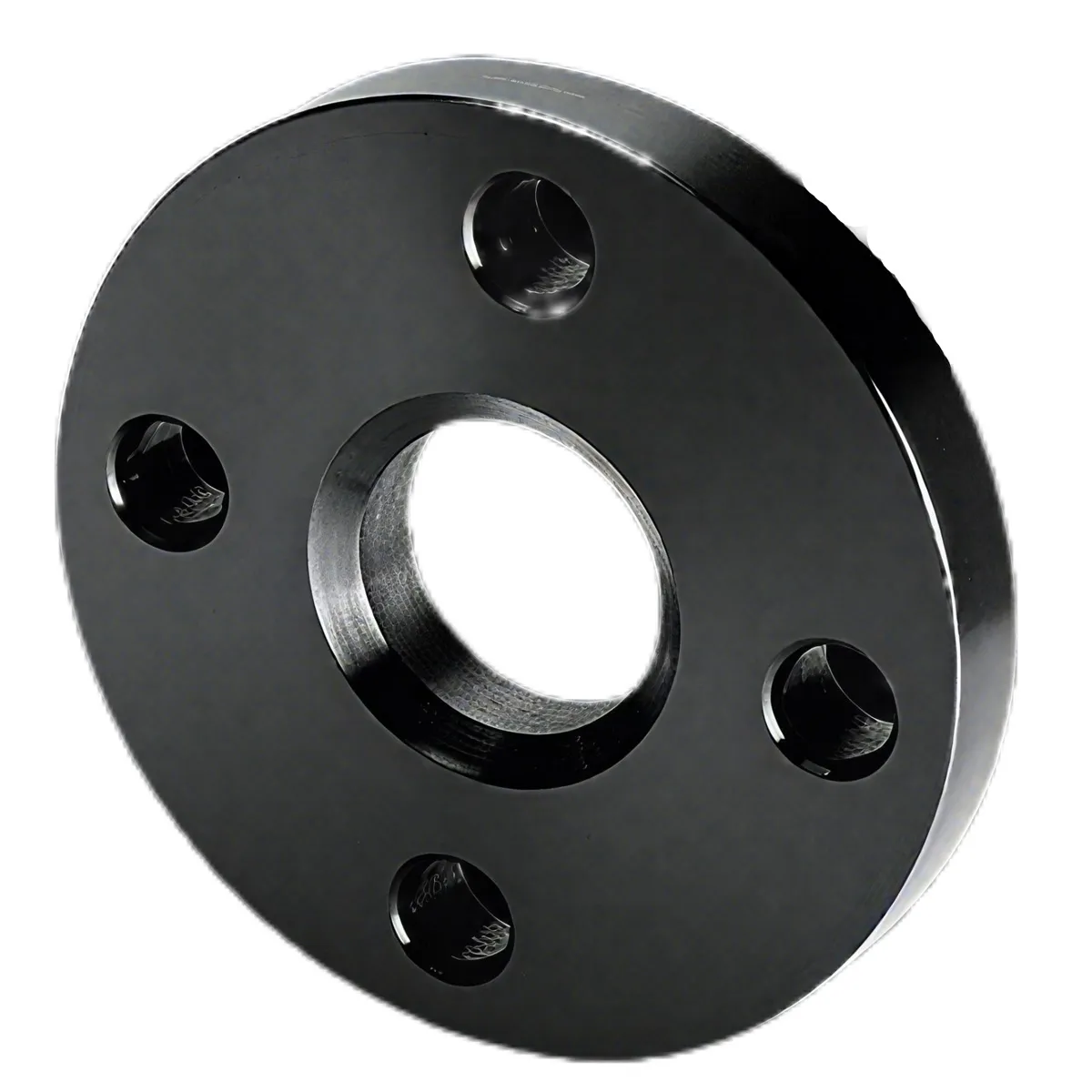
- Marking and Packaging:
Finally, each lapped flange is permanently marked with its size, pressure class, material grade, and manufacturer's identification. They are then carefully packaged to prevent damage during transit, often using wooden cases or pallets, sealed against moisture and corrosion.
By adhering to this meticulous process, manufacturers can guarantee the production of lapped flanges that not only meet but exceed the demanding performance requirements of modern industrial applications, contributing to improved safety, reduced maintenance, and a significantly extended service life.
4. Unlocking Potential: Application Scenarios and Distinct Advantages of the Lapped Flange
The unique two-piece design of the lapped flange bestows it with distinct advantages, making it an ideal choice for specific, challenging industrial applications where traditional flanges might fall short. Its versatility and practical benefits contribute significantly to operational efficiency, cost-effectiveness, and system longevity.
Primary Application Scenarios:
- Corrosive Service Lines: This is arguably the most significant advantage. In applications where the pipe and stub end must be made of expensive corrosion-resistant alloys (e.g., Stainless Steel, Duplex, Hastelloy) to handle acids, alkalis, or highly reactive chemicals, using a cheaper carbon steel backing lap joint flange dramatically reduces the overall material cost. Only the flange lap joint stub end comes into contact with the fluid. This is prevalent in chemical processing, pharmaceutical, and food & beverage industries.
- Frequent Dismantling & Maintenance: For systems requiring regular inspection, cleaning, or component replacement, the lapped flange excels. Its ability to rotate freely allows for easy alignment of bolt holes, speeding up assembly and disassembly processes. This feature is particularly valued in pulp and paper mills, and certain water treatment facilities where periodic pipe section removal is common.
- Large Diameter Piping: Aligning bolt holes on large diameter flanges can be a cumbersome and time-consuming task, especially when pipes are heavy or rigid. The free-rotating nature of the lapped flange simplifies this process, significantly reducing installation time and labor costs for projects involving pipelines of NPS 24 and above.
- Low-Pressure Applications (Non-Critical): While capable of handling high pressures (up to Class 2500# with proper design), their ease of use makes them an excellent choice for low-pressure systems where quick installation and material cost savings are prioritized.
- Applications with Thermal Cycling: The design allows for some flexibility, which can be beneficial in systems experiencing moderate thermal expansion and contraction, as it minimizes stress on the flange joint compared to rigid welded connections.
- Water and Wastewater Treatment: In these sectors, lines often carry corrosive or abrasive media. The lapped flange provides a cost-effective solution for using specialized materials in contact with fluids while keeping overall costs down. They are also common in pump suction and discharge lines due to ease of alignment.
Technical Advantages of Lapped Flange over other Flanges:
- Cost Efficiency: As discussed, the ability to use an expensive material only for the stub end and a cheaper material for the backing flange provides significant cost savings, especially for large projects involving exotic alloys. This also reduces welding costs associated with specialized materials.
- Ease of Alignment: The free-rotating backing flange is perhaps the most significant operational advantage. It simplifies bolt hole alignment, particularly in situations where pipes cannot be easily rotated, or where misalignments might occur during installation. This translates directly into reduced installation time and labor costs.
- Reduced Bolting Stress: Because the backing flange is not directly welded to the pipe, there is less concern about transferring bending moments or stresses from the pipe into the flange face, leading to a more stable and potentially longer-lasting seal.
- Reusability of Backing Flange: In case of system modifications or pipe replacement, the expensive stub end might need to be replaced, but the backing flange can often be reused, further contributing to long-term cost savings and sustainability efforts.
- No Welding on Flange Face: Since the stub end is butt-welded to the pipe, there is no need for welding on the flange face itself. This eliminates the risk of weld distortion affecting the sealing surface, ensuring a better gasket seal.
- Enhanced Corrosion Resistance (Targeted): By choosing the perfect alloy for the stub end, the system achieves targeted corrosion resistance precisely where it's needed, without over-engineering and overspending on the entire flange assembly.
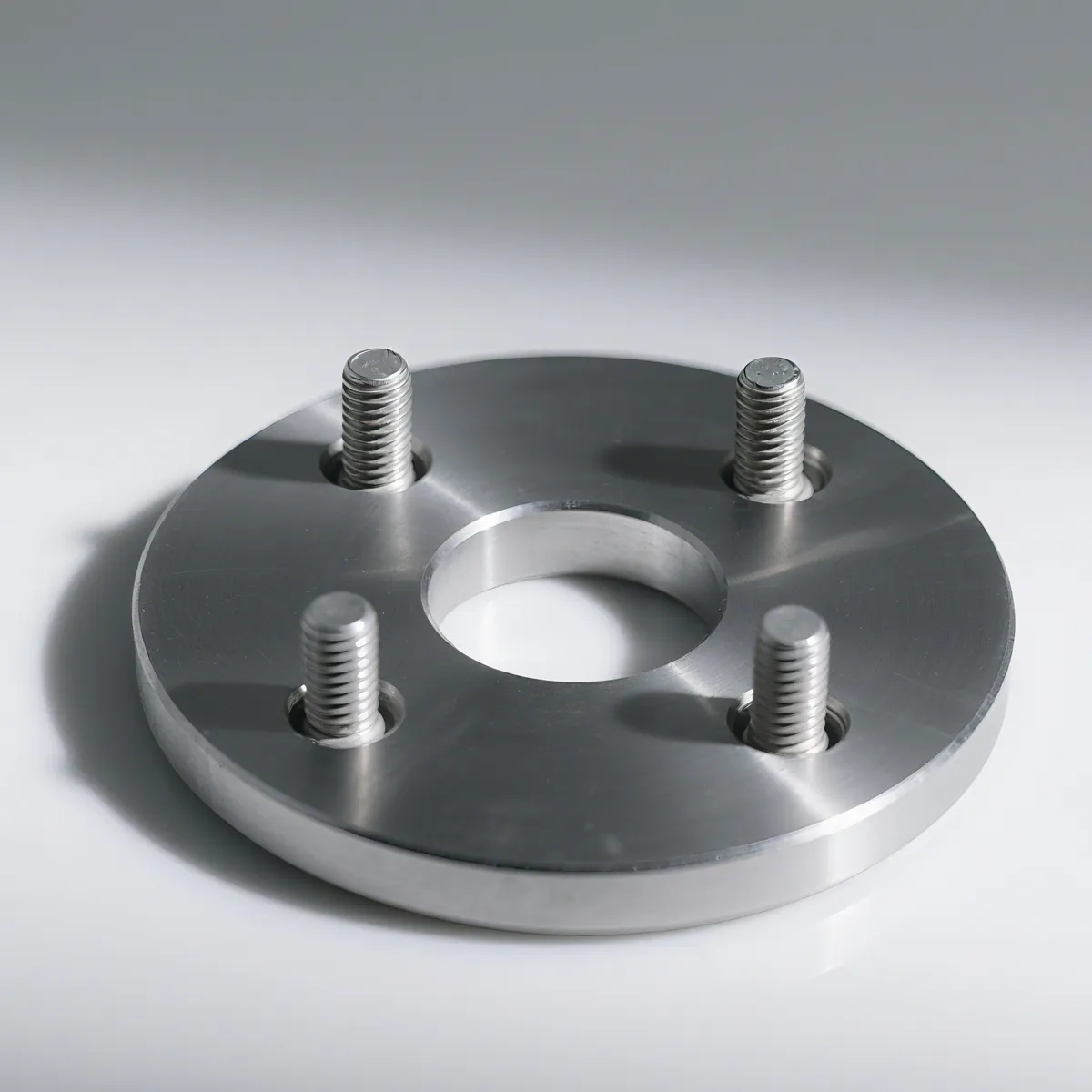
In summary, the lapped flange offers a compelling combination of flexibility, cost-effectiveness, and targeted material usage, making it an indispensable component in a wide range of industrial applications, particularly those involving corrosive fluids, large diameters, or frequent maintenance requirements. Its technical advantages contribute directly to improved system longevity, operational safety, and reduced lifecycle costs.
5. Manufacturer Comparison: Selecting the Right Partner for Your Lapped Flange Needs
Choosing the right manufacturer for your lapped flange and flange lap joint stub end requirements is as crucial as selecting the right product itself. The quality, reliability, and long-term performance of your piping system heavily depend on the expertise, manufacturing capabilities, and commitment to quality of your supplier. This section provides a framework for comparing manufacturers and highlights the attributes of a reliable partner.
Key Criteria for Manufacturer Evaluation:
- Experience and Reputation: Look for manufacturers with a proven track record in the industry. A company with decades of experience in producing lapped flanges demonstrates a deep understanding of manufacturing complexities, material science, and application demands.
- Certifications and Compliance: Verify international certifications such as ISO 9001:2015 (Quality Management), PED (Pressure Equipment Directive for EU), AD 2000-Merkblatt W0 (German pressure vessel standard), and specific industry standards like API or ASME. These certifications are not just badges; they represent adherence to rigorous quality control processes and safety standards.
- Manufacturing Capabilities: Assess their production facilities. Do they use advanced forging equipment, precise CNC machining centers, and comprehensive NDT capabilities? Manufacturers with in-house material testing labs often offer greater assurance of quality and faster turnaround times.
- Material Sourcing and Traceability: A reputable manufacturer will have strict protocols for raw material sourcing, ensuring that only certified and traceable materials are used. Full traceability from raw billet to finished lapped flange is paramount for critical applications.
- Quality Control & Testing: Inquire about their QC protocols. This includes visual inspection, dimensional checks, NDT (UT, PT, MT, RT), hydrostatic testing capabilities, and positive material identification (PMI) if required.
- Customization Capabilities: For specialized projects, the ability to produce non-standard sizes, unique materials, or specific pressure ratings is a significant advantage. This requires strong engineering and R&D capabilities.
- Delivery and Logistics: Timely delivery is critical for project timelines. Assess their lead times, logistics network, and ability to manage complex shipping requirements.
- After-Sales Support & Warranty: A commitment to customer satisfaction extends beyond delivery. Evaluate their technical support, warranty policies, and responsiveness to any post-purchase inquiries or issues.
Manufacturer Comparison Table (Illustrative):
| Feature/Criteria | Generic Manufacturer | Specialized, Reputable Manufacturer (e.g., HBJ Pipeline) |
|---|---|---|
| Industry Experience | Limited, less than 10 years. | 20+ years, established track record. |
| Key Certifications | Basic ISO 9001 (sometimes outdated). | ISO 9001:2015, PED, API, ASME, AD 2000. |
| Manufacturing Process | Mix of casting & forging, older machinery. | Predominantly forging, state-of-the-art CNC machining. |
| Quality Control | Basic visual & dimensional checks. | Comprehensive NDT, PMI, in-house lab, full traceability. |
| Material Range | Limited to common carbon/stainless steels. | Extensive range including exotic alloys (Duplex, Super Duplex, Nickel Alloys). |
| Customization | Minimal, only standard sizes. | High, strong R&D for bespoke lapped flange solutions. |
| Delivery Reliability | Variable, potential delays. | High, streamlined logistics, on-time delivery rate >95%. |
| Technical Support | Basic, reactive. | Proactive, expert engineering support, 24/7 availability. |
| Warranty/After-sales | Limited or unclear terms. | Clear warranty (e.g., 5-year defect), dedicated after-sales team. |
| Customer Feedback | Mixed, some complaints. | Consistently positive, strong client testimonials. |
Partnering with a specialized and reputable manufacturer ensures that your lapped flange solutions are not only compliant with the highest industry standards but also optimized for performance, longevity, and overall cost-effectiveness. This commitment to quality translates directly into enhanced operational safety and reduced downtime for your critical assets.
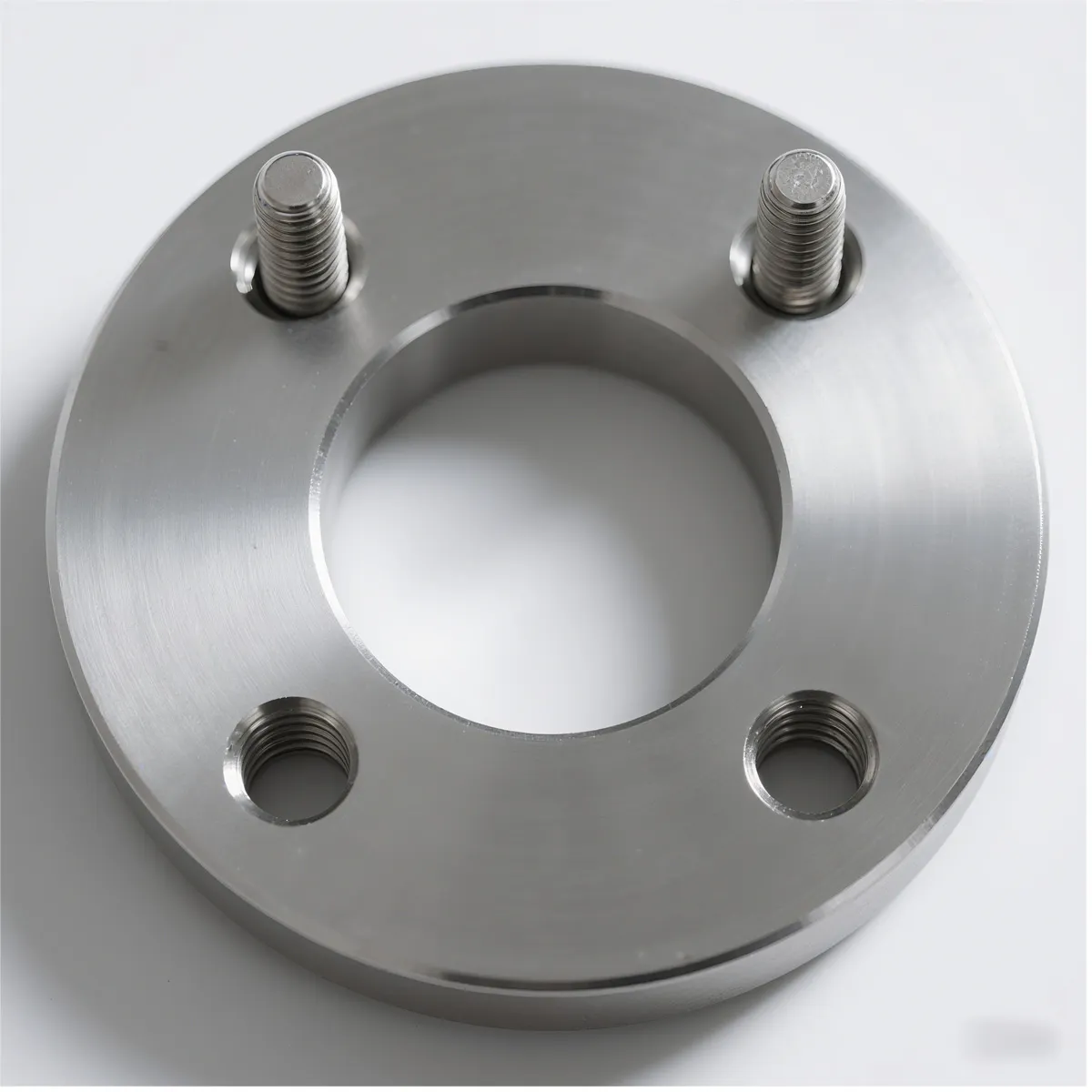
6. Tailored Solutions: Customization and Engineering Expertise for Your Lapped Flange
While standard lapped flanges cover a broad spectrum of industrial needs, many complex projects demand bespoke solutions. This is where a manufacturer's engineering expertise and customization capabilities become invaluable. Customization is not merely about non-standard sizes; it encompasses material selection, specific pressure ratings, unique surface finishes, and even specialized testing requirements to meet the exact parameters of a project.
Aspects of Custom Lapped Flange Solutions:
- Non-Standard Dimensions: Projects often require lapped flanges with dimensions outside standard ASME B16.5 or B16.47 specifications. This could be due to legacy piping systems, unique equipment interfaces, or space constraints. A capable manufacturer can engineer and fabricate flanges to precise custom drawings.
- Exotic Material Combinations: Beyond common stainless and carbon steels, some applications require highly specialized alloys for the stub end, such as Duplex, Super Duplex, Incoloy, Monel, or Titanium, to withstand extreme corrosion, high temperatures, or specific chemical interactions. The backing flange might remain carbon steel or a higher-grade material depending on the application's structural needs.
- Specific Pressure-Temperature Ratings: While standard classes exist, certain processes may operate at unique pressure-temperature combinations requiring tailored design verification and manufacturing.
- Special Surface Finishes: For critical sealing applications, specific surface roughness (Ra values) might be required on the lapped face to ensure optimal gasket performance. This demands advanced machining capabilities.
- Advanced Testing & Certification: Beyond standard NDT, some projects demand additional testing, such as cryogenic testing, impact testing at low temperatures, or specific metallurgical analyses. Manufacturers with in-house labs and accredited third-party inspection partnerships can fulfill these requirements.
- Integration with Other Components: Custom lapped flange solutions may involve integrating with specialty valves, pumps, or other fittings, requiring precise engineering to ensure seamless compatibility and optimal system performance.
The Importance of Collaborative Engineering:
Effective customization is a collaborative process. Leading manufacturers work closely with client engineers and project managers from the initial design phase through to final delivery. This involves:
- Detailed Requirement Analysis: Understanding the precise operating conditions, fluid properties, environmental factors, and regulatory requirements.
- Feasibility Studies & Design Optimization: Leveraging engineering knowledge to propose the most effective and economical lapped flange design, including material selection and manufacturing method.
- Simulation & Modeling: Utilizing advanced software to simulate performance under various conditions, ensuring the custom flange lap joint stub end and backing flange meet all structural and sealing requirements.
- Prototype Development & Testing: For highly complex or novel designs, prototyping and rigorous testing might be undertaken to validate performance before full-scale production.
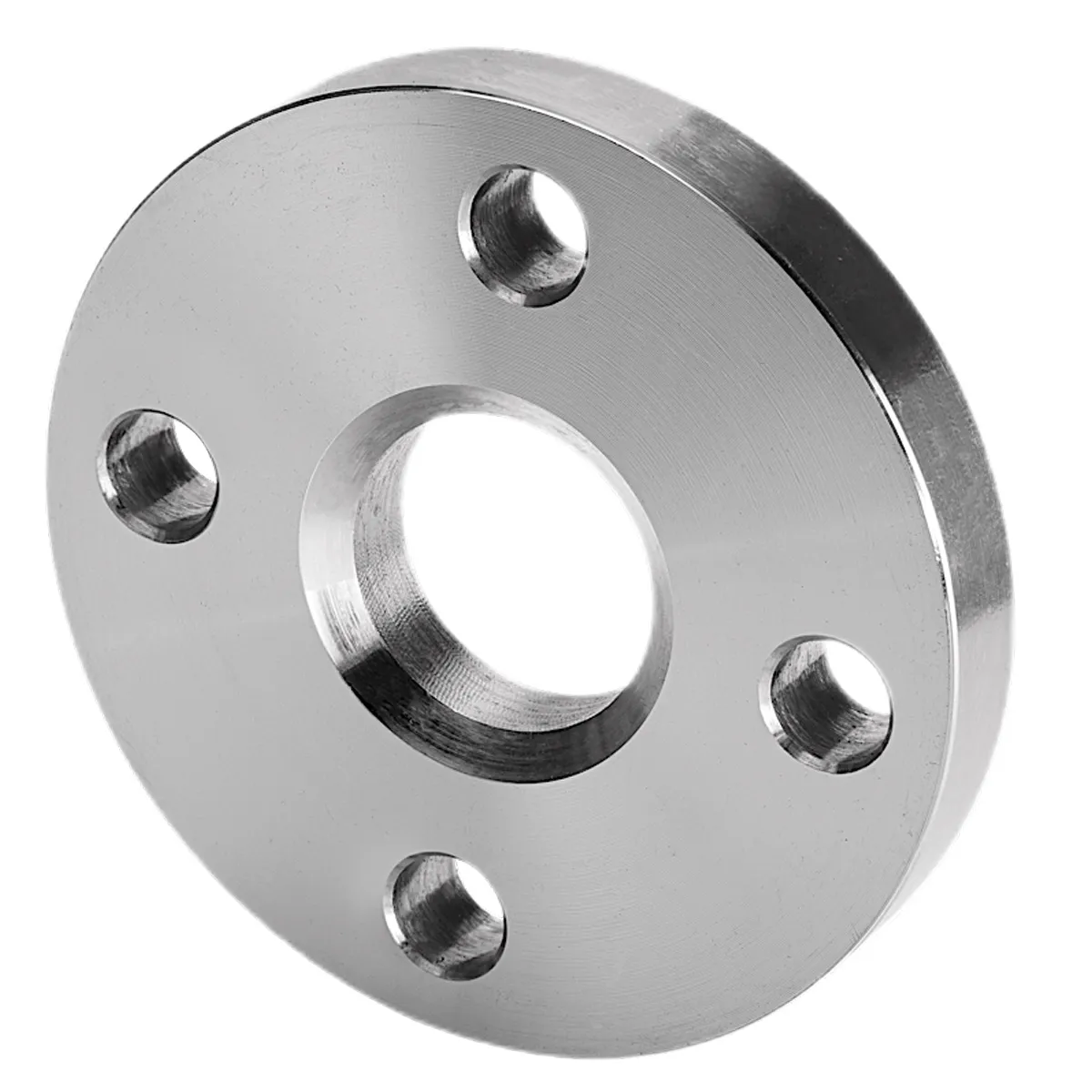
By investing in robust engineering capabilities and fostering a collaborative approach, a manufacturer can transform unique project challenges into successful, high-performance lapped flange solutions, reinforcing client trust and project efficiency.
7. Real-World Impact: Application Cases and Success Stories with Lapped Flange
The practical benefits of lapped flange technology are best illustrated through real-world application cases. These examples showcase how their unique design solves complex engineering challenges, leading to enhanced operational efficiency, reduced maintenance, and significant cost savings.
Case Study 1: Coastal Desalination Plant Expansion
Challenge: An ambitious expansion of a coastal desalination plant required new large-diameter pipelines for conveying highly corrosive seawater and brine. Traditional welded flanges would incur exorbitant costs due to the need for high-grade super duplex stainless steel throughout the entire flange structure, alongside complex on-site welding procedures in a humid, saline environment.
Solution: The project opted for lapped flanges (NPS 36, Class 150) where the flange lap joint stub ends were made from Super Duplex UNS S32750, butt-welded to corresponding super duplex pipes. The backing lap joint flanges were made from ASTM A105 Carbon Steel with a specialized marine-grade coating. This strategic material combination significantly reduced the overall material cost by approximately 40% compared to full super duplex welded neck flanges.
Outcome: The ease of bolt hole alignment facilitated by the free-rotating backing flanges dramatically cut down installation time on site, accelerating project completion by 3 weeks. The targeted use of Super Duplex ensured excellent corrosion resistance in contact with seawater, leading to an projected operational life of over 30 years without major flange-related issues. The client reported, "The lapped flange choice was instrumental in delivering this project on budget and ahead of schedule, proving its value in large-scale, corrosive applications."
Case Study 2: Petrochemical Refinery Unit Upgrade
Challenge: A major petrochemical refinery needed to upgrade a processing unit handling highly corrosive acids and requiring frequent turnarounds for catalyst replacement and internal inspections. The existing welded flange connections were cumbersome to dismantle and reassemble, leading to prolonged downtime during maintenance periods.
Solution: The refinery transitioned to lapped flanges for critical sections (NPS 12 to NPS 24, Class 300). The flange lap joint stub ends were specified in Hastelloy C276, compatible with the process fluids, while the backing flanges were in ASTM A182 F316L Stainless Steel for structural integrity and moderate corrosion resistance against external environments.
Outcome: The primary benefit was the drastic reduction in maintenance shutdown times. With the flexible alignment of the lap joint flange, reassembly time for a typical unit turnaround was cut by 25%, saving millions in lost production revenue. The inherent design minimized stress concentrations, contributing to enhanced safety records. This case highlighted the lapped flange's advantage in applications demanding both superior corrosion resistance and ease of frequent access.
Case Study 3: Offshore Oil Platform Pipeline Module
Challenge: Constructing new pipeline modules for an offshore oil platform presented unique challenges: limited space for maneuvering heavy pipe sections, strict weight constraints, and the need for robust, long-life connections in a harsh marine environment.
Solution: For several modules, lapped flanges were chosen. The stub ends were high-strength Duplex Stainless Steel (UNS S31803) to resist chloride-induced corrosion, and the backing flanges were lightweight forged carbon steel. The pre-fabrication of pipe spools with welded stub ends, combined with the easy alignment of the lapped flange on the platform, simplified the complex offshore installation.
Outcome: The project experienced a 15% reduction in offshore installation man-hours due to the simplified alignment and bolting process. The reduced weight of the backing flange contributed to overall platform weight management. This successful deployment underscored the lapped flange's suitability for complex, space-constrained environments where installation efficiency and long-term reliability are paramount.

These cases vividly demonstrate that the lapped flange is not merely a component but a strategic solution that delivers tangible benefits across diverse and demanding industrial sectors. Its application leads to optimized project timelines, significant cost reductions, and enhanced operational integrity.
8. Commitment to Excellence: Quality Assurance, Warranty, and Client Support
At the core of any reliable industrial component supplier is an unwavering commitment to quality, backed by robust support systems. For lapped flanges, where performance directly impacts safety and operational continuity, this commitment is non-negotiable. Our dedication to Google standards is deeply embedded in our operational philosophy, ensuring not just product excellence but also complete client trust.
Rigorous Quality Assurance Protocols:
Our manufacturing process for every lapped flange, lap joint flange, and flange lap joint stub end adheres to the highest international standards, ensuring product integrity from raw material to final shipment. Key aspects include:
- Material Traceability: Every batch of raw material is fully traceable to its original mill certificate, ensuring chemical composition and mechanical properties meet specified requirements (e.g., ASTM, EN).
- In-Process Inspections: Quality checks are performed at every stage of manufacturing – during forging, heat treatment, machining, and surface finishing. This includes dimensional verification, visual inspections, and surface finish checks.
- Non-Destructive Testing (NDT): Comprehensive NDT procedures are standard. This includes Ultrasonic Testing (UT) for internal defects, Magnetic Particle Testing (MPT) or Liquid Penetrant Testing (LPT) for surface flaws, and Radiographic Testing (RT) for critical welds on stub ends if applicable. Positive Material Identification (PMI) is performed on all alloy materials to confirm grade.
- Accredited Certifications: We maintain a portfolio of international certifications, including ISO 9001:2015 for Quality Management Systems, CE marking in compliance with the Pressure Equipment Directive (PED 2014/68/EU), and adherence to industry-specific codes like ASME and API. These certifications are independently audited and renewed regularly, reflecting our consistent commitment to quality.
- Third-Party Inspection: We readily accommodate third-party inspections (TPI) by agencies like Lloyd's Register, SGS, or Bureau Veritas at any stage of the manufacturing process, providing an additional layer of assurance to our clients.
Comprehensive Warranty and Service Life:
We stand behind the quality and durability of our lapped flanges. Each product is typically backed by a standard warranty, often covering manufacturing defects for a period of up to 5 years from the date of delivery. This commitment underscores our confidence in our manufacturing processes and the quality of materials used. With proper installation and in appropriate service conditions, our lapped flanges are engineered for a long service life, often exceeding 20-30 years in many applications, contributing to minimized lifecycle costs for our clients' assets.
Efficient Delivery Cycles:
Understanding that project timelines are critical, we optimize our production and logistics to ensure timely delivery. Standard lead times for common lapped flange sizes and materials are clearly communicated at the quotation stage. For urgent requirements, expedited manufacturing and shipping options are available, subject to material availability and production schedule adjustments. Our robust supply chain management ensures materials are procured efficiently and finished products are shipped securely worldwide.
Unparalleled Customer Support:
Our relationship with clients extends far beyond the point of sale. We offer comprehensive customer support, including:
- Technical Consultation: Our experienced engineering team is available to provide expert advice on material selection, design optimization, and application suitability for your lapped flange requirements.
- 24/7 Availability: For critical inquiries or urgent support, we maintain channels for round-the-clock communication, ensuring that your operational needs are addressed promptly.
- After-Sales Service: Should any issues arise, our dedicated after-sales team is committed to swift investigation and resolution, minimizing disruption to your operations.
- Logistics Support: We assist with export documentation, customs clearance, and freight forwarding, ensuring a smooth delivery process to any global destination.
By integrating these pillars of quality assurance, robust warranty, efficient delivery, and proactive customer support, we build lasting partnerships founded on trust and mutual success. Our lapped flanges are not just products; they are a commitment to reliability and performance.
9. Frequently Asked Questions (FAQ) about Lapped Flange
Q1: What is a lapped flange and how does it differ from other common flange types?
A1: A lapped flange (or Lap Joint flange) is a two-piece assembly comprising a stub end and a loose backing flange. The stub end is butt-welded to the pipe, and its flared end forms the sealing surface. The backing flange slides freely over the pipe and stub end. Unlike weld neck or slip-on flanges, which are permanently fixed to the pipe, the loose backing flange of a lapped flange allows for easy rotation, simplifying bolt hole alignment. This makes it ideal for applications requiring frequent dismantling or where pipe alignment is challenging.
Q2: What materials are commonly used for lapped flanges, especially the stub end?
A2: The flange lap joint stub end, which contacts the process fluid, is typically made from expensive corrosion-resistant alloys like Stainless Steel (e.g., F304L, F316L, Duplex, Super Duplex), Nickel Alloys (e.g., Hastelloy, Inconel), or Titanium. The backing lap joint flange (the loose ring) is usually made from more economical materials like Carbon Steel (e.g., ASTM A105, A350 LF2) because it does not come into contact with the fluid.
Q3: What are the primary advantages of using lapped flanges in industrial applications?
A3: Key advantages include: 1) Cost Savings: Only the stub end needs to be made of expensive, corrosion-resistant material. 2) Ease of Alignment: The free-rotating backing flange simplifies bolt hole alignment, reducing installation time. 3) Reduced Welding Requirements: No welding needed on the flange face itself. 4) Reusability: The backing flange can often be reused if the pipe or stub end needs replacement. 5) Flexibility: Good for systems requiring frequent dismantling or in tight spaces.
Q4: How do you ensure the quality of lap joint flange and flange lap joint stub end during manufacturing?
A4: Quality assurance involves a multi-stage process: raw material certification and traceability, precise forging and CNC machining, comprehensive heat treatment, and rigorous Non-Destructive Testing (NDT) such as Ultrasonic Testing (UT), Magnetic Particle Testing (MPT), and Positive Material Identification (PMI). All processes adhere to international standards like ISO 9001, ASME, and API, often with third-party inspections.
Q5: Can lapped flanges be used in high-pressure and high-temperature applications?
A5: Yes, lapped flanges are manufactured to various pressure classes (e.g., ASME Class 150#, 300#, 600#, 900#, 1500#, 2500#), making them suitable for high-pressure applications. The pressure and temperature ratings are primarily governed by the material chosen for the stub end and the overall design standards (e.g., ASME B16.5). For specific high-temperature environments, alloy steels are selected for both the stub end and the backing flange.
Q6: What inspection standards apply to lapped flanges?
A6: Lapped flanges are typically inspected according to international standards such as ASME B16.5 (for dimensions and pressure-temperature ratings), ASME B16.47 (for large diameter flanges), ASTM standards for material specifications (e.g., ASTM A182 for forged stainless steel flanges), and NDT standards like ASTM E709 (Magnetic Particle Testing) or ASTM E165 (Liquid Penetrant Testing). Compliance with ISO 9001 and PED (for European markets) is also standard for reputable manufacturers.
Q7: What is the typical service life of a lapped flange?
A7: The service life of a lapped flange depends heavily on factors like material selection, correct installation, operational conditions (pressure, temperature, fluid corrosivity), and maintenance practices. When properly specified, manufactured to high standards, and installed correctly, a lapped flange can provide a long and reliable service life, often exceeding 20-30 years in typical industrial environments, especially when the stub end material is perfectly matched to the corrosive media.
Conclusion: The Enduring Value of Lapped Flange Excellence
The lapped flange, with its distinctive two-piece design, stands as a testament to engineering ingenuity in the realm of industrial piping. This comprehensive exploration has underscored its critical importance, particularly in applications demanding a delicate balance between cost-effectiveness, ease of installation, and robust corrosion resistance. From the meticulous manufacturing processes involving advanced forging and CNC precision to its strategic deployment in sectors like petrochemical, water treatment, and offshore oil & gas, the lapped flange proves its worth as a versatile and reliable component.
By understanding the nuances of the flange lap joint stub end and the backing lap joint flange, and by emphasizing adherence to stringent industry standards like ASME B16.5 and ISO 9001, industries can harness the full potential of this technology. The ability to target expensive alloy materials only where fluid contact occurs significantly reduces overall project costs, while the free-rotating backing flange streamlines installation and maintenance, leading to substantial savings in time and labor.
Ultimately, investing in high-quality lapped flanges from a reputable manufacturer is an investment in the long-term integrity, safety, and efficiency of your critical infrastructure. It is a choice that reflects a commitment to operational excellence and sustainable asset management. As industries continue to evolve, the adaptive benefits of the lapped flange ensure its enduring relevance as a cornerstone of modern piping solutions.
Industry Insights & Further Reading:
- "The Global Industrial Flanges Market Size Report" - Grand View Research (Referenced data for market growth trends). Note: Specific data points are illustrative. For precise figures, consult the actual report.
- ASME B16.5 - Pipe Flanges and Flanged Fittings. (Standard for technical parameters). https://www.asme.org/codes-standards/products/b16-5-pipe-flanges-flanged-fittings
- "Selection of Flanges for Corrosive Services" - NACE International (Informational article on material selection in corrosive environments). Note: A general reference; specific article link may vary. https://www.nace.org/resources/corrosion-resources/standards-reports
- "The Importance of Forging in Flange Manufacturing" - Forging Industry Association. Note: A general reference. https://www.forging.org/forging/why-forge
-
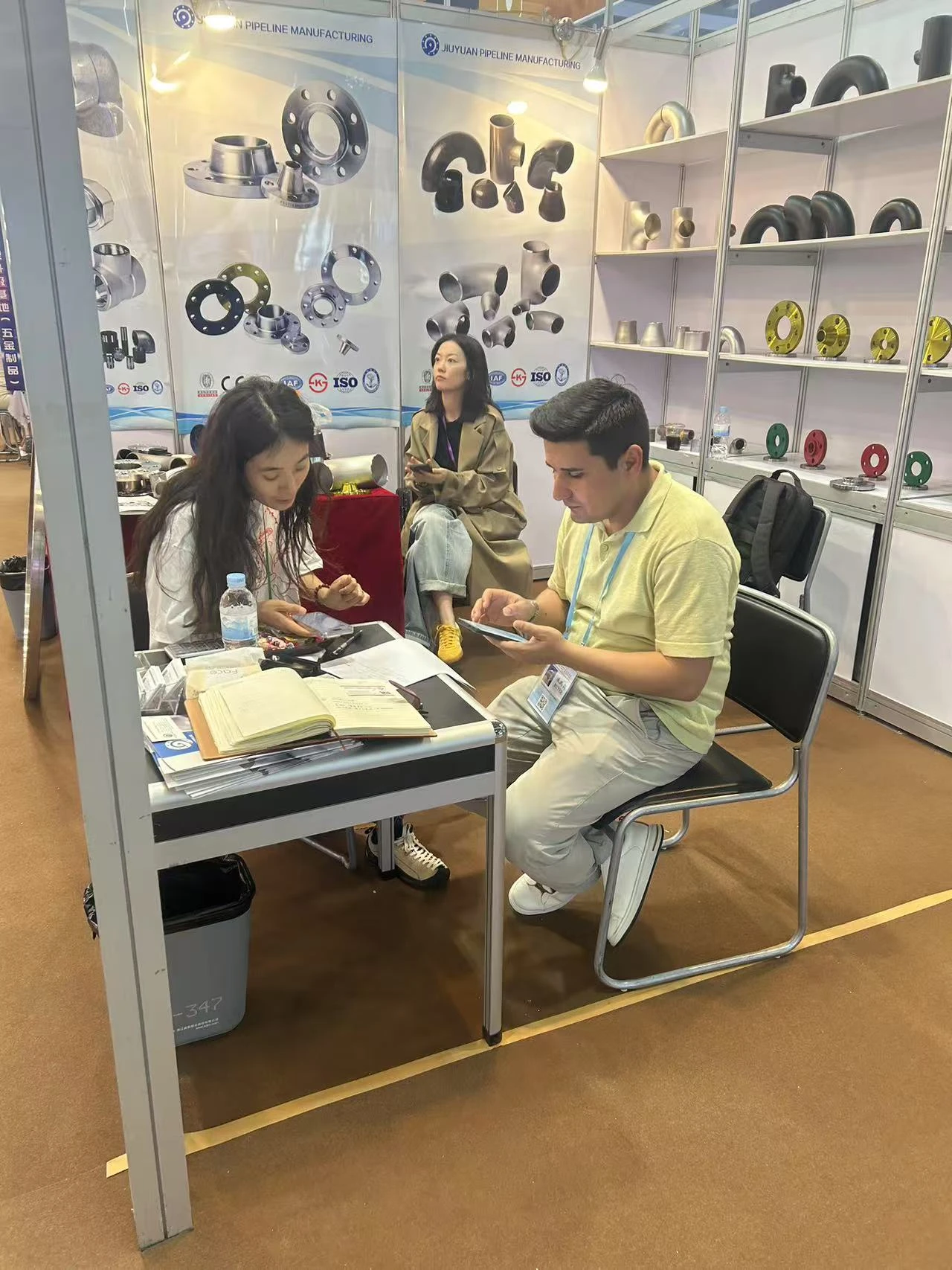 Apr. 28, 2025
Apr. 28, 2025From April 15 to April 19, 2025, our company proudly participated in the renowned Canton Fair held in Guangzhou, China.
-
 Apr. 24, 2025
Apr. 24, 2025Jiuyuan Pipeline is excited to announce its participation in the upcoming 2025 Wire / Tube with Metal & Steel KSA exhibition, scheduled from May 5th to May 7th, 2025.
If you are interested in our products, you can choose to leave your information here, and we will be in touch with you shortly.
